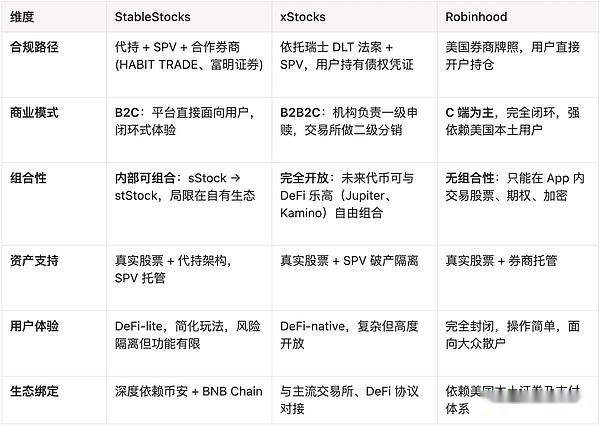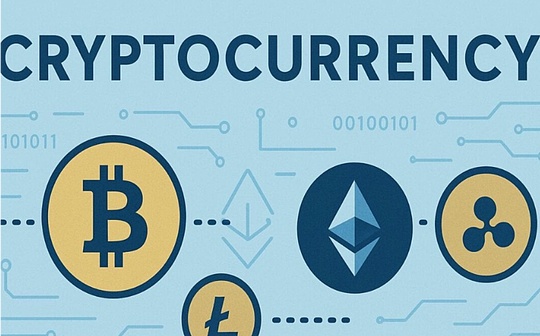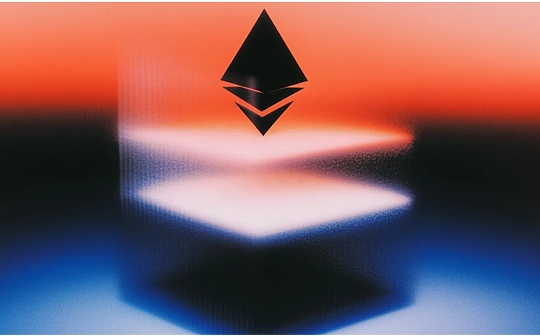
Author: Kevin, Movemaker Researcher; Source: X, @MovemakerCN
Under the expectation of “deregulation” that Trump may bring, the long-silent tokenized stock track is rekindling the war with the new look of RWA in 2025.It is undoubtedly a grand and tempting narrative to introduce the world’s most liquid asset – US stocks – into the crypto industry, allowing crypto users around the world to trade anytime, anywhere.
However, this road is not smooth.From the early STO concept, to DeFi Summer’s synthetic asset experiments, to the brief attempts of FTX and Binance, the history of tokenized stocks is full of twists and turns.Now, with the subtle changes in the regulatory environment, a new round of competition has begun.
In this competition, three forces are emerging, representing three completely different paths: Internet brokerage giantsRobinhoodThe “dimensionality reduction strike” is native to DeFixStocks“Open Lego” (issued by Backed Finance and distributed by Kraken, etc.) and mysterious newcomers supported by institutions such as Jingwei Venture CapitalStableStocks“Mixed Mode”.
This article will analyze these three troikas in depth, explain their legal core, business model and core differences in detail, and explore who is most likely to take the lead in this high-risk game.
1. Four waves of tokenized stocks
To understand today’s competitive landscape, we must review history.The development of tokenized stocks has gone through four stages:
-
STO Germination Period (2017-2018): The concept of STO (Securities-based token issuance) is emerging, aiming to comply with traditional securities onto the chain.However, this attempt soon ceased due to the lack of unified standards, high compliance costs and lack of liquidity in the secondary market.
-
Synthetic Asset Experimental Period (2020 DeFi Summer): Projects represented by Synthetix and Mirror Protocol attempt to mint “synthetic assets” linked to the US stock price by over-collateralizing crypto assets.This model bypassed the regulatory difficulties of holding stocks directly, but ultimately failed due to the failure to find the PMF.Inadequate demand for on-chain transactions has led to market makers lack motivation and liquidity exhaustion. In the end, most projects removed related assets on the grounds of “regulatory considerations”.
-
CEX Test Period (2020-2021): Centralized exchanges such as FTX and Binance have launched centrally custodial tokenized stocks through cooperation with licensed financial institutions.This model once attracted considerable trading volume (FTX’s monthly trading volume reached $94 million in October 2021), but it quickly faced huge regulatory pressure due to direct competition with traditional exchanges such as Nasdaq.Binance’s service was suspended after only three months of its launch, and FTX’s business ended with the collapse of its empire.
-
RWA Renaissance (Current): Under new regulatory expectations, the track restarts.This time, the core narrative becomes RWA, emphasizing the issuance of tokens backed by real stocks through a compliant legal structure and put asset security and transparency first.
2. Overview of the current market structure
According to RWA.xyz, the current stock RWA market has a total issuance of approximately $374 million, but it has slow growth.The market structure is characterized by fragmentation:
-
Exodus (EXOD): The largest market capitalization (about $258 million), but its model is more symbolic.Users can migrate EXOD stocks listed on the NYSE to the Algorand chain, but this is just a “digital clone” that does not include any on-chain rights and cannot be traded and circulated on-chain.
-
Dinari: This is a model of compliance exploration.The company is registered in the United States and has obtained a valuable broker-dealer license.However, in order to meet strict regulation, its issuance of dShares cannot be traded freely on-chain, and all transactions must be conducted through its official website during the U.S. stock trading period.This makes its product experience have no advantage compared to traditional brokers such as Futu. It is more like a traditional broker using cryptocurrency as a deposit channel, so the market size has been limited.
-
Montis Group: Montis Group is a UK-based digital asset issuer with a market capitalization of approximately US$55 million, focusing on “on chaining” real assets such as stocks and bonds in Europe.However, similar to Exodus’ situation, Montis has only achieved tokenization of its own stocks, and these tokens cannot be traded freely on-chain.For Web3 investors seeking liquidity and composability, this model has little practical significance at this stage.
It is in this context that the entry of Robinhood, xStocks and StableStocks has brought three more imaginative paradigms to the market.
Three and Three Horses – Deep Destruction of Three Modes
We willLegal core, business model and composabilityThree dimensions, disassemble these three major players.
1. Robinhood: Derivative Contract + B2C + Controlled Ecology
-
Legal core and compliance path: There are not many companies exploring the “crypto + stock” combination path around the world, but Robinhood’s approach seems unique.Instead of directly issuing tokens representing stock ownership, it cuts into the market in a more flexible way: mapping the target assets through the path of derivatives.Products launched in Europe are essentially not securities trading, but over-the-counter financial contracts issued based on the EU MiFID II framework.In other words, what users buy is not “stock tokens”, but a digital voucher that can track certain stock price fluctuations.This legal design allows Robinhood to avoid complicated securities compliance barriers and open up overseas markets with the lowest resistance.
-
Technical architecture and “walled garden”:
Low-level chain selection: In terms of technical selection, Robinhood uses Arbitrum as the landing network.Compared with the Ethereum main network, it obtains higher performance, lower transaction costs, and can also inherit mature Ethereum security.The deployment of hundreds of tokens was completed at just a few dollars in Gas costs, and the efficiency advantages were clear at a glance.
Permission control: However, this system is not an open DeFi paradise.A strict whitelisting rule is written inside the smart contract, and all transactions need to verify whether the recipient has passed Robinhood’s compliance certification.In other words, this is a typical “controlled area”, and users must complete KYC to enter. The ecology is firmly controlled by Robinhood itself, and therefore sacrifices the interoperability with the external DeFi world.
Future ambition: What is more intriguing is Robinhood’s next move.The company is planning to launch its own Layer 2 network based on the Arbitrum technology stack – Robinhood Chain.This action is not just to reduce costs, but to send out a stronger signal: Robinhood wants to take the initiative in the underlying technology and provide a tailor-made environment for the future large-scale RWA strategy.
-
Strategic Depth and Vision: If this model is simply understood as a “closed garden”, it actually underestimates Robinhood’s ambitions.CEO Vlad Tenev repeatedly mentioned that the company’s vision is “Capital as a Service”.Tokenization is not a gimmick, but an important tool for Robinhood to promote financial democratization, especially for illiquid assets that have been locked in the hands of high-net-worth individuals for a long time.Imagine that if ordinary users can indirectly obtain equity exposure from unlisted giants such as SpaceX or OpenAI through derivative tokens, the power structure of the capital market will be reshuffled.Of course, the reality is not entirely optimistic.Top private equity companies often have no shortage of funds, so it is almost impossible to take the initiative to “invite retail investors to enter”.This means that tokenization solutions must bypass traditional issuance logic in order to reach ordinary investors.But this model also hides risks: after Robinhood launched OpenAI-related tokens, the company immediately issued a statement to clarify that it had nothing to do with it, which also exposed a problem – the derivative model may have a huge gap in information transparency and investor understanding.If compared with other platforms, Robinhood’s cutouts are different from traditional on-chain securities attempts (such as Synthetix’s synthetic assets, or Polymarket’s forecast market).It does not emphasize the complete openness of DeFi, but rather seizes the market through a combination of “strong compliance + high user experience”.Its logic is more like an extension of the financial technology platform than a thorough on-chain fundamentalism.If regulatory acquiesces or even gradually accepts it, Robinhood will be the first to establish a super entrance covering retail investors, compliance and RWA, and may even become the first stop for retail investors in Europe and the United States to enter tokenized finance.
Comment in one sentence: Robinhood’s attempt was not simply “moving stocks to blockchain”, but an experiment to use encryption technology to reshape the traditional derivative distribution model.It uses blockchain to improve product delivery and compliance efficiency, with its goal far exceeding the crypto circle itself, and it truly points to the redefinition of the entire global financial system.
2. xStocks: Asset-backed tokens + B2B2C + Full Composability
-
Legal core and compliance path: On the tokenized stock track, xStocks has a unique positioning.Unlike some derivative platforms that only provide price mapping, it is taking the path of full mapping of physical assets.The entire architecture is built by Swiss compliance team Backed Finance, which follows Switzerland’s DLT legal framework and hosts real stocks through a Special Purpose Vehicle (SPV) established in Liechtenstein.This SPV is responsible for only one thing – holding the underlying assets themselves and legally completely isolated from the issuer and trading platform.In other words, even if there is a problem with the operator, the investor’s rights can be independently protected.What investors get is not a “contract paper”, but a priority guaranteed debt certificate corresponding to real assets.
-
Technical architecture and transparency:
Low-level chain selection: On a technical level, xStocks places token issuance on Solana.The reason is not difficult to understand: high-speed throughput, low cost, and extremely low confirmation latency. These features are naturally suitable for frequent transactions and DeFi combination gameplay.
Transparency cornerstone: In order to make investors trust that their tokens do have real reserve support, xStocks introduced Chainlink’s reserve proof open contract: anyone can verify the reserves on the chain at any time, which gives its “asset tokens” an additional layer of transparency endorsement.The SPL tokens and xStocks tokens can be freely circulated on Solana, and are easily connected with DeFi protocols such as Jupiter and Kamino, and are fully composable.
Open contract: On the other hand, as a standard SPL token, xStocks tokens can be freely circulated on Solana, easily connected with native DeFi protocols such as Jupiter and Kamino, and is fully composable.
-
Strategic Depth and Vision: From the perspective of the business path, xStocks is not a closed loop that directly faces the C-end, but adopts the distribution logic of B2B2C.The token redemption of the primary market is completed by Backed Finance for institutions, while the transactions in the secondary market are based on exchanges such as Kraken and Bybit.In this way, it can not only attract professional institutions, but also reach a large number of retail investors through mature exchanges, and ultimately release liquidity in an open ecosystem.Data has proven the potential of this model: After gaining support from mainstream platforms, its daily trading volume once exceeded $6 million.A longer-term vision is to develop this model into “tokenization as a service” and provide financial institutions with standardized asset-blocking tools.
The way of playing xStocks is in sharp contrast to Robinhood.Robinhood’s model is more like “digitalization of financial derivatives”, relying on controlled whitelisting mechanisms to lock users; while xStocks is real assets on the chain and maintains full interoperability with DeFi.This means that it is naturally more in line with Web3’s “open Lego” narrative, but it also needs to bear the regulatory gray areas and risk spillover issues in an open environment.
Whether this model can work depends on two points:
1. Can deep liquidity be truly established?If tokenized assets are only one-way issuance and lack sufficient counterparty and arbitrage mechanism, then their market significance will be very limited.
2. Can it win long-term regulatory tolerance?The current SPV architecture has been legally isolated, but the recognition of “tokenized securities” by countries in the future has not yet been unified.Once there is a regulatory conflict, the ecosystem may experience major fluctuations.
It is worth noting that the xStocks pattern may inspire a wider range of application scenarios.For example, it provides a replicable paradigm for “asset endorsement tokens” outside stablecoins, especially for tokenization of bonds, ETFs, and even art funds.Unlike the “controlled tokens” launched by a single exchange, it emphasizes free combination with the DeFi module, which injects new sources of liquidity into the entire crypto ecosystem.
Comment in one sentence: xStocks is not reshaping the exchange, but providing a new asset base for DeFi.It tries to move the value of traditional finance to the chain in a real and transparent manner, and creates a new market ecology through open combinations.If Robinhood’s direction is “business on the chain”, then the logic of xStocks is more like “asset on the chain”.
3. StableStocks: Agent shareholding + B2C + platform combination mechanism
-
Legal core: StableStocks adopts a unique “agent holding + beneficiary” model.The platform actually buys and custodies stocks by setting up specialized SPVs and collaborating with licensed securities firms (such as HABIT TRADE in Australia).In the end, the investor does not directly hold shares, but enjoys corresponding rights as beneficiaries.This arrangement allows StableStocks to operate on the compliance system of its partners without directly holding a complete brokerage license, taking into account compliance and flexibility.
-
Business model: StableStocks is positioned as a typical B2C model, which packages all deposits, trading, custody, and derivative gameplay on its own platform.Unlike some solutions that use B2B2C, StableStocks prefers to directly serve end users.Ecologically, it is closely bound to Binance and BNB Chain.
-
Compositionality: The core difference of StableStocks is that it does not pursue completely open external composition, but builds an internal composable closed-loop system.The stock equity tokens held by users can be further deposited into the platform’s “StableVault” and then minted a stStock with income attributes.This is a kind of “a walled financial playground” logic – there are limitations in gameplay, but the experience is more controllable.
From a more systematic perspective, the mode link of StableStocks can be disassembled into five key links:
-
Stock acquisition and source
Real stocks from licensed brokers: Australia Habit Trade (70% of shares) is responsible for US stock channelsTraditional banks (such as ABC and DBS) provide fiat currency settlement and funding channel support.The source of stocks is real, not synthetic assets.
-
Settlement and Hosting Mechanism
Stocks are uniformly escrowed by SPV to isolate risks;Cooperate with Nasdaq’s liquidator to ensure compliance and stability of the flow of underlying assets.Ensure a 1:1 correspondence and reduce the risk of counterparty default.
-
Tokenization and on-chain issuance
StableStocks maps custodial stocks into stock tokens;Token issuance runs on BNB Chain and receives support from Binance Wallet and trading ecosystem;Behind each token is actual asset support, which is a standard asset-backed token.
-
Stablecoins and currency circle entrances
Connect with Coinbase’s stablecoin channel, users can directly exchange stock tokens with USDC;The barriers to fund conversion between fiat currency users and crypto users have been solved.
-
User-side usage and extension
Stock tokens can be held and traded in Binance wallet;In addition to the investment itself, it can also be embedded in the DeFi module built by StableStocks (staking, income enhancement).The user experience is closer to the combination of “Robinhood + DeFi-lite”.
StableStocks is taking the “middle path” – neither closed to transactions like Robinhood, nor fully open to integration with the entire DeFi Lego like xStocks, but rather builds a semi-open system.For traditional financial investors, it provides a new way to enter the on-chain market; for crypto users, it provides a convenient entrance to access blue-chip stocks such as Tesla, Apple, and McDonald’s.The core selling points are:
-
Compliance: borrowing the licensed brokerage system;
-
Stable: Clearer + SPV Hosting;
-
Easy to use: B2C closed loop;
-
Innovation: Internal Combinable DeFi-lite.
Comment in one sentence: StableStocks is an intermediate route that tries to balance Robinhood’s closed ease of use and the open complexity of xStocks.It bets that users want a “DeFi-lite” experience – they can enjoy the enhanced benefits brought by DeFi without having to bear the full risks and complexity of open DeFi.
Triangle comparison: StableStocks vs xStocks vs Robinhood

IV. Insurmountable structural obstacles
Despite the different models, all stock tokenization plans at this stage face several common structural obstacles that are difficult to solve in the short term:
-
The contradiction between value proposition and actual liquidity: All platforms currently face the classic dilemma of “first chicken or egg”.On the one hand, for users who have been able to trade US stocks conveniently, the value proposition of tokenized stocks is unclear.On-chain transactions not only fail to provide better rates, but instead lead to higher transaction slippage due to lack of liquidity, which is far inferior to mature Internet brokers.On the other hand, it is precisely because of the lack of a strong enough value proposition to attract large-scale users and capital to enter the market that on-chain liquidity has been unable to deepen, forming a self-reinforced negative feedback loop: without users, there is no liquidity, and without liquidity, it is even more unattractable for users.Unless it can provide irreplaceable new utility to existing users, it is difficult to break this deadlock.
-
Structural flaws: Current tokenized stocks are essentially just “digital twins” of real stocks, but this replication has fundamental flaws.First, the promise of the 24/7 deal is largely illusory.When the underlying stock market (such as the Nasdaq) is closed, on-chain market makers cannot hedge their risk exposure and can only avoid risks by extreme expansion of price spreads or directly withdrawing liquidity, which greatly reduces the effectiveness of weekend and after-hours trading.Secondly, these tokens divest complete shareholder rights.What users obtain is the right to claim the value of the stock economy, rather than the full ownership, including the right to vote.
-
Centralized risks under the cloak of “decentralization”: Although running on decentralized blockchains, the trust foundations of these RWA models are highly concentrated on a series of off-chain entities.Whether it is the SPV that issues tokens, the third-party bank responsible for asset custody, the partner brokerage firm that executes transactions, or the bridge connecting the fiat currency and the crypto world, each link is a potential centralized failure point.Once these centralized entities fail in operation, legal disputes, or even bankruptcy, the tokens on the chain may instantly lose value support.
-
The potential paradox of DeFi composability: For open models like xStocks, the ultimate vision is to become the “Lego of Money” in the DeFi world.However, this composability faces a serious paradox.When considering whether to accept TSLAx as collateral, a DeFi lending agreement not only needs to assess the risk of price volatility of Tesla’s stock itself, but also the platform risks posed by its tokenized structure—that is, the risk of default by the issuer Backed Finance or its custodial party.This dual exposure of “asset risk + platform risk” makes DeFi protocols extremely cautious when integrating these RWA assets.In addition, the vague legal status of these tokens has also discouraged the DeFi agreement, fearing that it will cause regulatory crackdowns due to the “illegal operation of securities business.”This explains why no mainstream DeFi protocols have used them as core collateral and the road to true composability remains long.
Conclusion: Who can win the future in the three modes?
The end of this competition may not depend on whose legal structure is more clever, but who can be the first to create irreplaceable value for users.
-
Robinhood’s victory path is scale.If its goal is to provide a familiar asset class to tens of millions of existing users in a novel form, it is likely to win in terms of user count.
-
The winning path of xStocks lies in eco-based.If the narrative of “Financial Lego” is established, and there will be a large number of DeFi protocols that will use it as core collateral or underlying assets in the future to build on-chain options, lending and structured products, then it will win the future of Web3.
-
The winning path for StableStocks is experience.If it can prove that “DeFi-lite” is a real market, by providing a one-stop, low-threshold “transaction + income” experience, it may be able to open up a blue ocean between mainstream users and hard-core DeFi users.
From the root of the source, the so-called “on-chain US stocks” are still in the experimental stage, and are currently more like a financial packaging under the regulatory gap than a mature market tool.The node that can truly change the rules of the game is not about who can first pass a proof of concept, but about who can deliver a complete trading system integrating spot, short selling, leverage and risk management on the chain.Only when the financial playability and functionality of on-chain stocks are truly comparable to or even surpassing the old brokerage firms on Wall Street, this transformation will be considered to have entered a substantial stage.As for the moment, those pioneers have just pushed the wheels onto the track, and the real racing is far from beginning.






